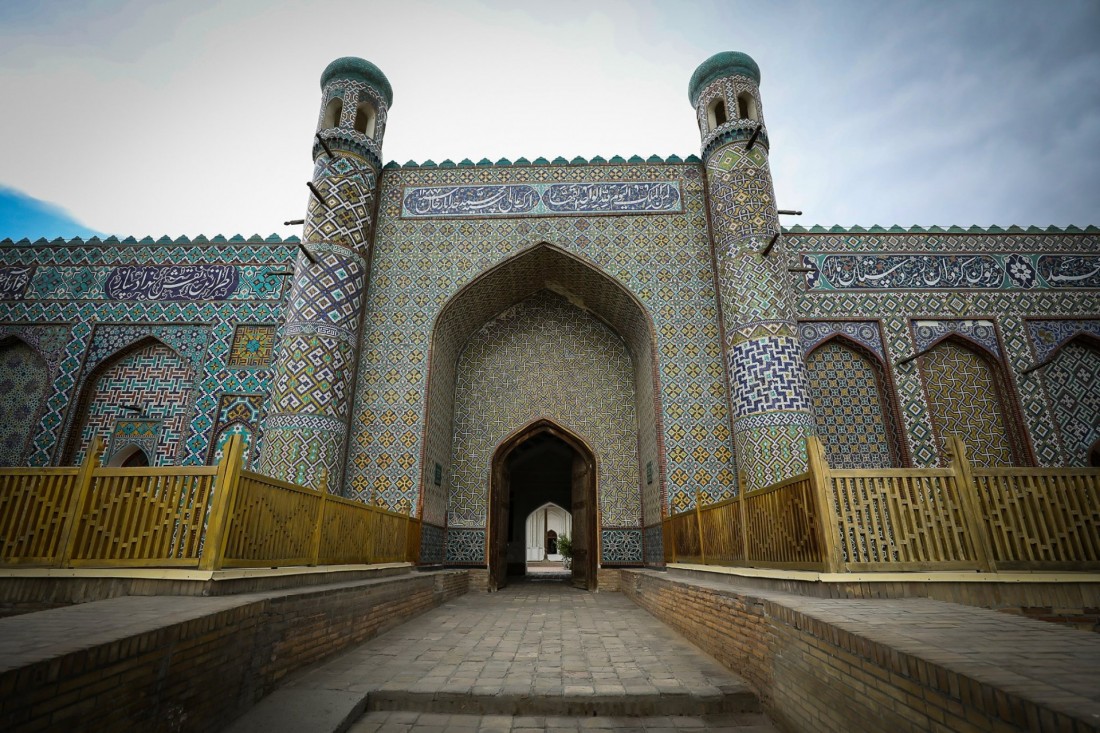Khudoyar Khan Palace
The real pearl of Kokand and one of the main historical attractions of the city is the palace of Khudoyar Khan, also popularly called "Kokand Urda".

By history is known, for a century and a half in the Kokand Khanate, more than 29 khans were replaced, but the most powerful and most memorable was Khudoyarkhan, who ascended the throne in 1845 at the age of 12.
In 1871, Khudoyar Khan built a grand palace. The majestic complex was the seventh khan's palace, and according to the khan's idea, it was supposed to surpass the previous palaces in its size and magnificent decoration, to remind of the power of the Kokand ruler.
Initially, the building was 138 meters long and 65 meters wide and was located on an area of 4 hectares. The palace is raised at a three-meter level, with a long ramp leading to the main entrance. Here, at the foot of the ramp, there used to be cast-iron and copper cannons. On the portal above the huge carved doors stands an inscription in Arabic: "The Great Seyid Muhammad Khudoyar Khan". The palace is surrounded by a beautiful carved fence. On the right side, the complex is decorated with a faceted minaret, lined with ceramics, decorated with a pattern reminiscent of the colors of Ferghana silks.
The best masters of the khanate and neighboring possessions were involved in the construction of the palace. The construction was supervised by the talented architect of Kokand Mir Ubaydullo. The best artisans of Rishtan, the ancient center of ceramics, were engaged in finishing works in the palace.
In the beginning, the palace had 119 rooms, which were decorated with openwork Ganch carvings and colorful ornaments. A special place was occupied by the throne room and the khan's reception room, while the treasury, the royal treasury and the military arsenal were located nearby. The rooms for his children and the private quarters of the Khan and his wives were also richly decorated. After the conquest of the Kokand Khanate by the Russian Empire, Khudoyar Khan and his family were sent to Tashkent. Most of his property was confiscated and later looted. Today, some artifacts of the Kokand Khanate can be found in several world museums. One of them, the throne of Khudoyar Khan, decorated with precious stones, is kept in the St. Petersburg Hermitage. And from the palace itself to the present day, only 2 courtyards and 19 rooms have been preserved, here is the local museum of local lore, telling about the former splendor of the powerful khanate.
Map
Leave a comment
By logging in, you agree to the processing personal data
See also
Workhours: 9:00-18:00, Mn-Fr
For any questions
Uzbekistan


 UZB
UZB RUS
RUS JPN
JPN ARA
ARA FRA
FRA CN
CN DE
DE POR
POR ESP
ESP TUR
TUR ITA
ITA HIN
HIN MAL
MAL
A comment